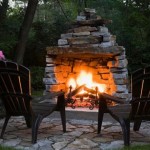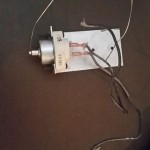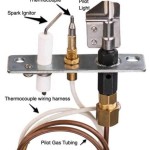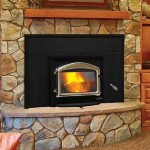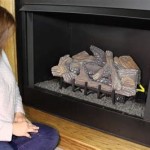How To Build A Floating Fireplace Mantel
A floating fireplace mantel provides a sleek, modern aesthetic to any living space. This type of mantel appears to defy gravity, creating a visually appealing focal point without traditional corbels or support legs. Building a floating mantel requires careful planning, precise measurements, and a solid understanding of structural support. This article outlines the process of constructing a robust and aesthetically pleasing floating fireplace mantel, covering key considerations to ensure safety, stability, and a professional finish.
Planning and Preparation
The initial phase of building a floating fireplace mantel is critical for success. This involves determining the desired dimensions, selecting appropriate materials, and ensuring compatibility with the existing fireplace structure. Neglecting these preliminary steps can lead to design flaws, structural instability, and potential safety hazards.
Determining Dimensions: The dimensions of the mantel should be proportionate to the size of the fireplace and the overall room. Consider the mantel's length, depth, and thickness. A mantel that is too large can overwhelm the space, while one that is too small may appear insignificant. Measure the width of the fireplace opening and decide on the desired overhang on either side. For depth, a typical mantel ranges from 6 to 12 inches, but this can be adjusted based on personal preference and the room's layout. The thickness of the mantel will influence its visual weight and structural integrity; a thicker mantel will generally appear more substantial and offer greater load-bearing capacity.
Material Selection: The choice of material significantly impacts the mantel's appearance and durability. Common options include solid wood, engineered wood, and concrete. Solid wood offers natural beauty and can be stained or painted to match any décor. However, it is susceptible to warping and cracking if not properly seasoned and sealed. Engineered wood, such as MDF (Medium-Density Fiberboard) or plywood, provides a more stable and cost-effective alternative. These materials are less prone to warping and can be easily painted. Concrete offers a modern, industrial look but is considerably heavier and requires specialized installation techniques. The selected material should be resistant to heat and non-combustible where in close proximity to the fireplace opening.
Fireplace Compatibility: It is crucial to ensure that the mantel complies with local building codes and safety regulations. The mantel must be positioned at a safe distance from the fireplace opening to prevent combustion. Refer to the fireplace manufacturer's specifications and local building codes for precise clearance requirements. Generally, a minimum clearance of 12 inches above the fireplace opening is recommended for combustible materials. If the desired location violates these regulations, consider using non-combustible materials such as concrete or installing a heat shield.
Construction Process
The construction of a floating fireplace mantel involves creating a hollow box structure with a robust internal support system. This allows the mantel to appear to float while providing adequate load-bearing capacity. Precision and attention to detail are paramount during this phase to ensure structural integrity and a seamless finish.
Building the Hollow Box: The mantel's exterior is typically constructed from the chosen face material, cut to the desired dimensions. The face material is attached to the box frame, typically of thinner plywood, using glue and fasteners. The face edges can be mitered at 45-degree angles for a more professional and seamless look, or butted together. The corners must be perfectly aligned to create the illusion of a solid piece of material. Consider using wood filler to fill any gaps or imperfections before finishing.
Creating the Internal Support Structure: The secret to a floating mantel lies in its internal support system. This structure is responsible for transferring the mantel's weight to the wall studs. The support system typically consists of a series of horizontal and vertical supports constructed from wood or metal. The horizontal supports should be positioned to align with the wall studs, providing direct anchoring points. The vertical supports add rigidity to the structure and prevent sagging. The spacing of the supports depends on the mantel's length and the weight it will bear. As a general rule, supports should be placed every 12 to 16 inches.
Attaching the Support to the Wall: The support structure is attached to the wall using heavy-duty fasteners that penetrate the wall studs. Lag bolts or structural screws are recommended for this purpose. These fasteners provide superior holding power compared to standard screws or nails. It is crucial to locate the wall studs accurately using a stud finder. Drive the fasteners through the support structure and into the wall studs, ensuring that the support is securely anchored. Use a level to verify that the support is perfectly horizontal before tightening the fasteners completely. Predrilling pilot holes can prevent the wood from splitting and make it easier to drive the fasteners.
Installation and Finishing
The final stage of building a floating fireplace mantel involves installing the mantel onto the support structure and applying the desired finish. This stage requires careful alignment and attention to detail to achieve a seamless and visually appealing result. The finish of the mantel protects the material and enhances its aesthetic appeal.
Sliding the Mantel onto the Support: The hollow box mantel is carefully slid onto the wall-mounted support structure. The internal dimensions of the mantel should be slightly larger than the external dimensions of the support to allow for easy installation. Ensure that the mantel is fully seated on the support and that there are no gaps or wobbles. The mantel can be secured to the support using construction adhesive or hidden screws. Construction adhesive provides a strong and permanent bond between the mantel and the support. Alternatively, screws can be driven through the top of the mantel and into the support structure, concealing them beneath wood filler or plugs.
Finishing the Mantel: The finish of the mantel protects the material and enhances its aesthetic appeal. The choice of finish depends on the material used and the desired look. For wood mantels, options include staining, painting, and sealing. Staining enhances the natural grain of the wood, while painting provides a uniform color finish. Sealing protects the wood from moisture and wear. For engineered wood mantels, painting is the most common option. Concrete mantels can be sealed to protect them from staining and moisture. Before applying any finish, sand the surface of the mantel to create a smooth and even base. Apply primer to improve adhesion and coverage. Apply multiple coats of the desired finish, allowing each coat to dry completely before applying the next. Use a brush, roller, or sprayer to apply the finish, depending on the type of finish and the desired texture.
Addressing Fire Safety Concerns: After the mantel is installed, it is important to double-check clearance distances from the firebox opening. Ensure the mantel surface does not raise to dangerous temperatures when the fireplace is in use. Apply flame retardant sealant around the mantel where it meets the adjacent wall or any combustible material. It's also recommended to install a carbon monoxide detector in the same room with the fireplace for added safety.
Building a floating fireplace mantel requires careful planning, precision, and attention to detail. By following these steps and adhering to safety regulations, an individual can create a stunning focal point that will enhance their home for years to come.

Diy Floating Mantel Shelf

How To Install A Floating Mantle The Easy Way In Just One Afternoon

Diy Floating Beam Mantel Crystel Monte Home

How To Build A Floating Wood Mantel For Your Fireplace Hand Treated Home

Diy Floating Mantel Shelf

Diy Modern Farmhouse Floating Mantel Free And Unfettered

How To Build A Floating Wood Mantel For Your Fireplace Hand Treated Home

How To Build A Fireplace Mantel Easy Diy Blossoming Life

How To Build A Diy Mantel Shelf Simply Home

How To Build A Floating Mantel Diy Shelf Built From Scratch
Related Posts

